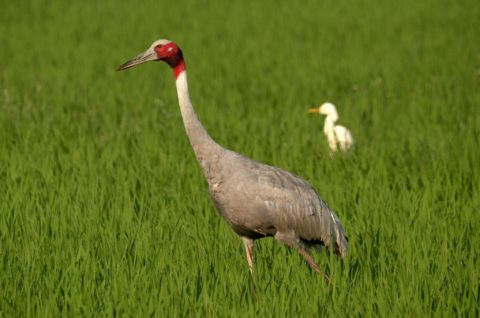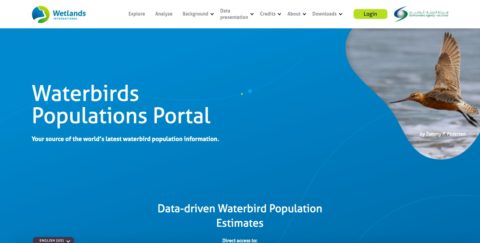
Waterbird Populations Portal
On 29 June 2021, Wetlands International launched the Waterbird Populations Portal (WPP), an online interactive platform containing the most recent data on the status and distribution of the world’s waterbird populations.
The new and improved open access Waterbird Populations Portal features an interactive interface with easier access to key information on the latest size estimates and trends of over 2,500 populations of over 870 waterbird species and 1% threshold of each population. It also features an analysis section that will allow users to generate and use a variety of their own information summaries in graphic form. It provides links to the 160 threatened waterbird species as per the IUCN Red List of Threatened Species. An added feature will provide population level boundary maps for all the world’s waterbird populations. Maps are included for over 300 populations at the time of the launch and will progressively updated to include all other populations over the coming year.

The Portal is used by national or local wetland authorities or site managers to access a shortlist relevant populations with their 1% population thresholds, to check against available information and identify potentially internationally or nationally important wetlands. This will help prioritisation of sites for legal designation or protection.
The Portal is especially designed to provide contemporary 1% population thresholds of all waterbird species that are required by Contracting Parties for the designation of Wetlands of International Importance (Ramsar Sites) under the Ramsar Convention on Wetlands. This information also supports identification of flyway network sites under the African Eurasian Migratory Bird Agreement (AEWA) Action Plan, the Central/West Asian Site Network for Siberian Cranes and Other Waterbirds established under CMS, East Asian – Australasian Flyway (EAAF) Site Network established under the EAAF Partnership, under the European Union’s Birds Directive and the EMERALD Network under the Convention on the Conservation of European Flora and Fauna, and for shorebirds under the Western Hemisphere Shorebird Reserve Network. Additionally it provides a criterion to increase the number and area of these internationally important sites contributing to achieving the protected area target of the Convention on Biological Diversity.

To ensure the latest information is available, regular updating of the waterbird population estimates has been requested by resolutions of the Ramsar Convention to support its Criterion 6 and priorities of the Ramsar Strategic Plan 2016-2024 (Target 6), Convention on Migratory Species and links to The Strategic Plan for Migratory Species 2015-2023 (Goal 3), Council for Arctic Flora and Fauna (CAFF) Arctic Migratory Birds Initiative (AMBI) Work Plan 2019-2023 (Objective 4), AEWA Strategic Plan, East Asian – Australasian Flyway Partnership (EAAFP) Strategic Plan and others.
The new Portal replaces the Waterbird Population Estimates Portal that was launched at the Ramsar Conference in 2012 and was intensively used by governments and conservationists around the world over the last decade.
